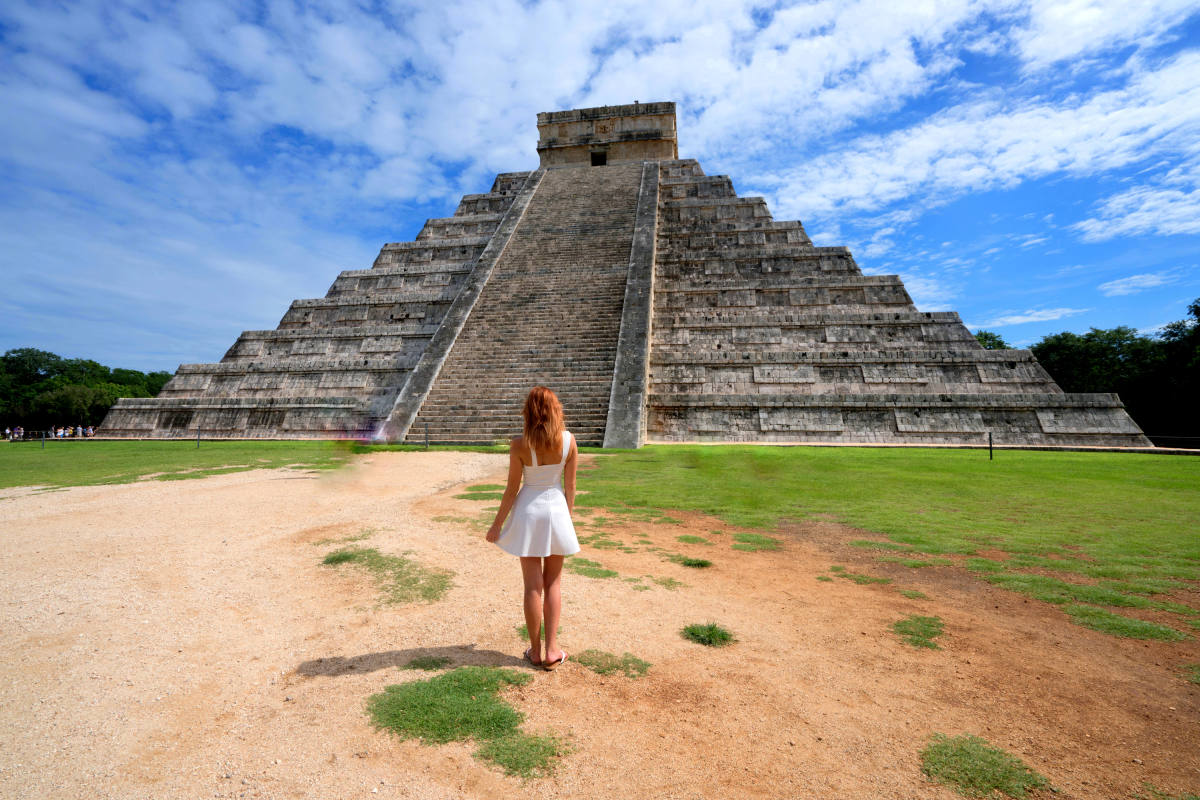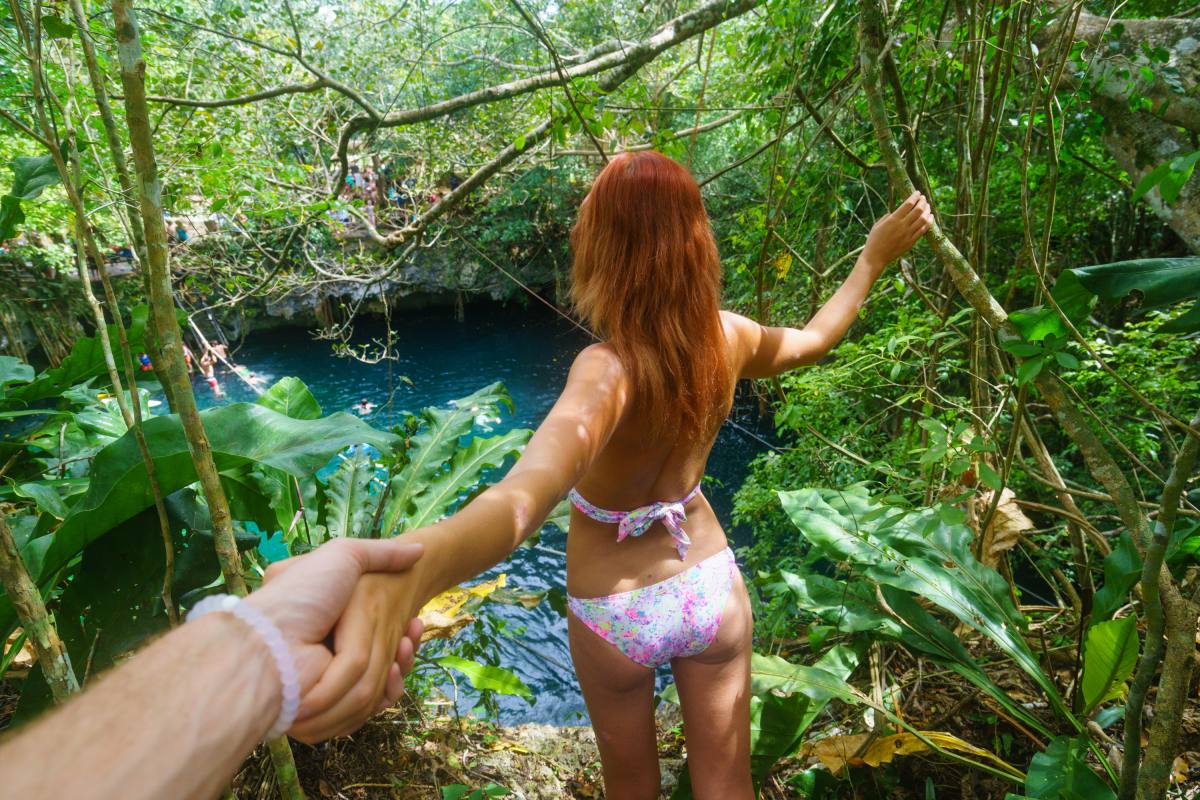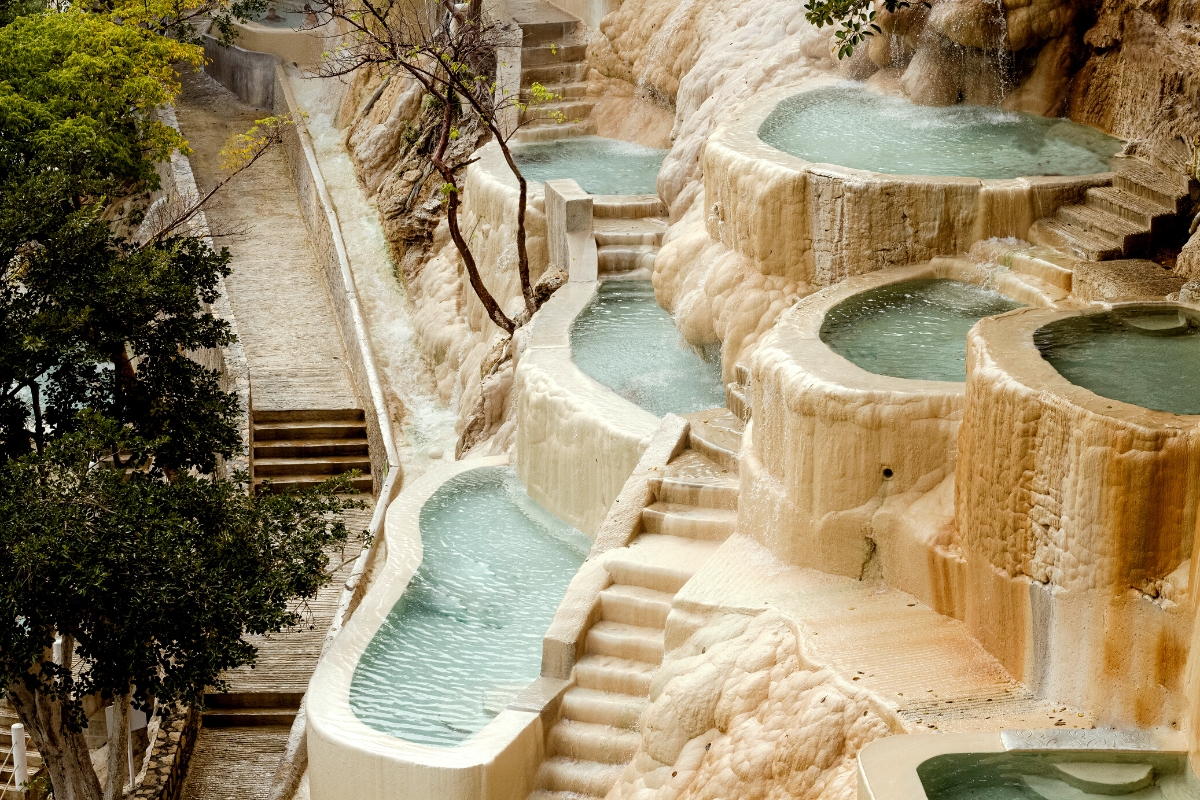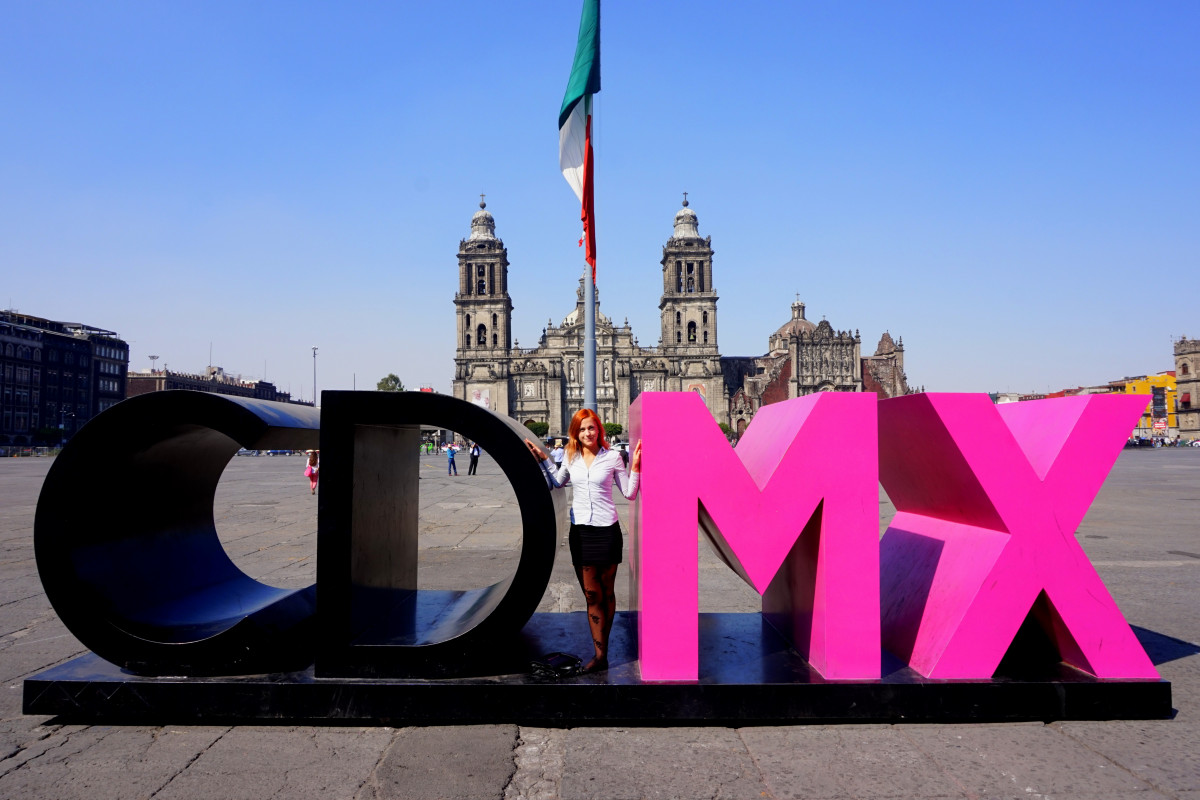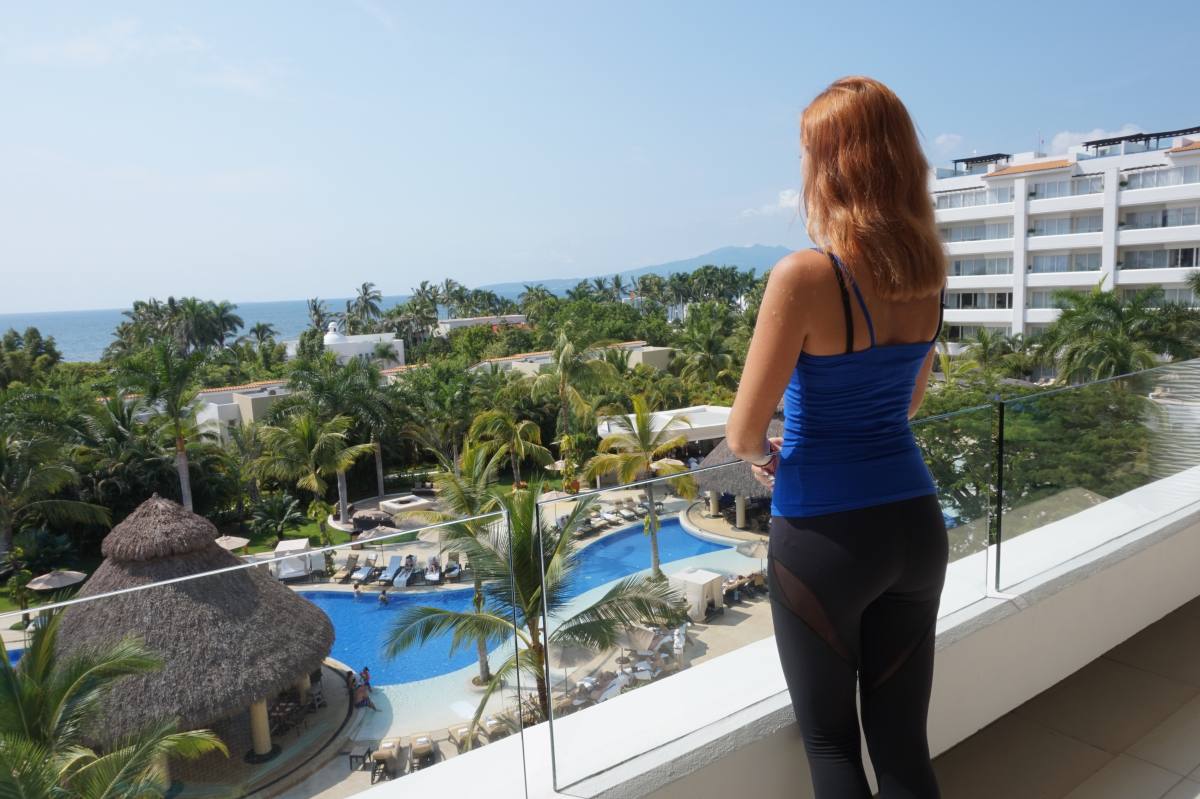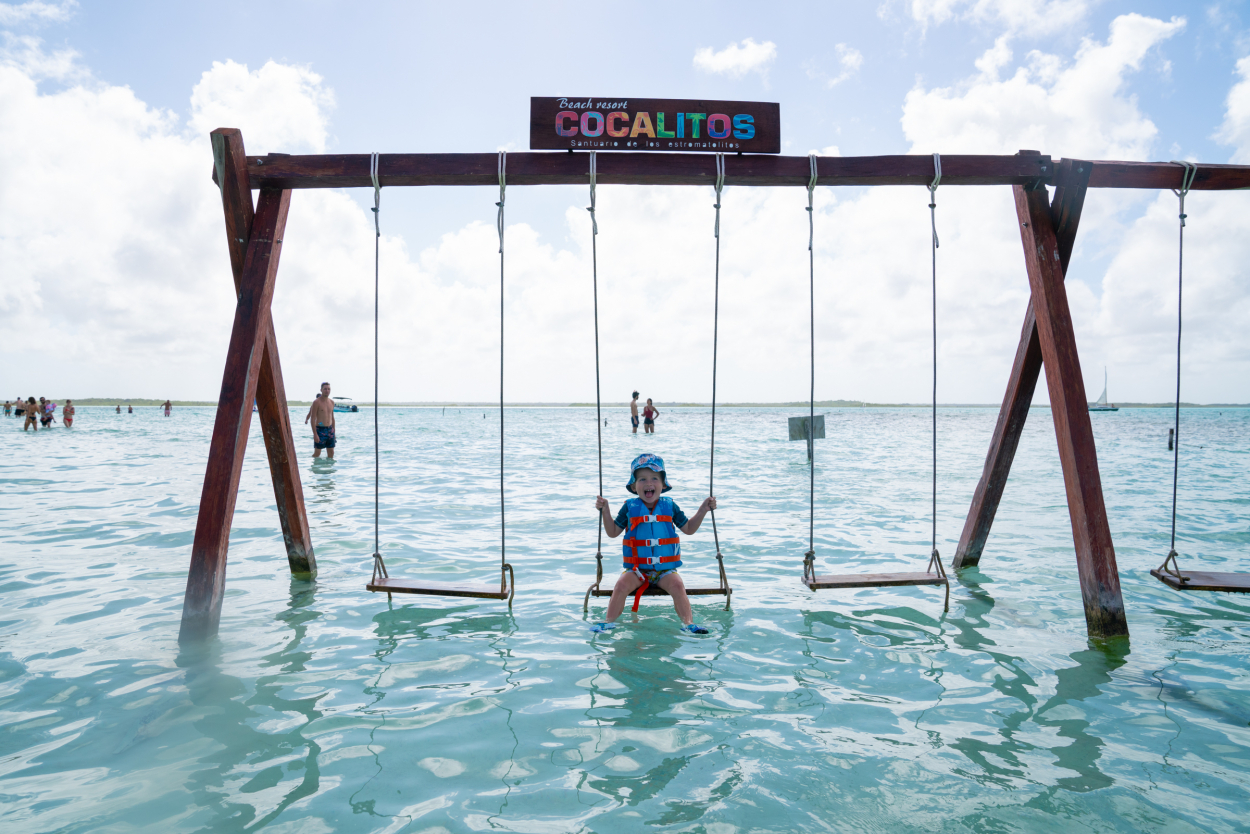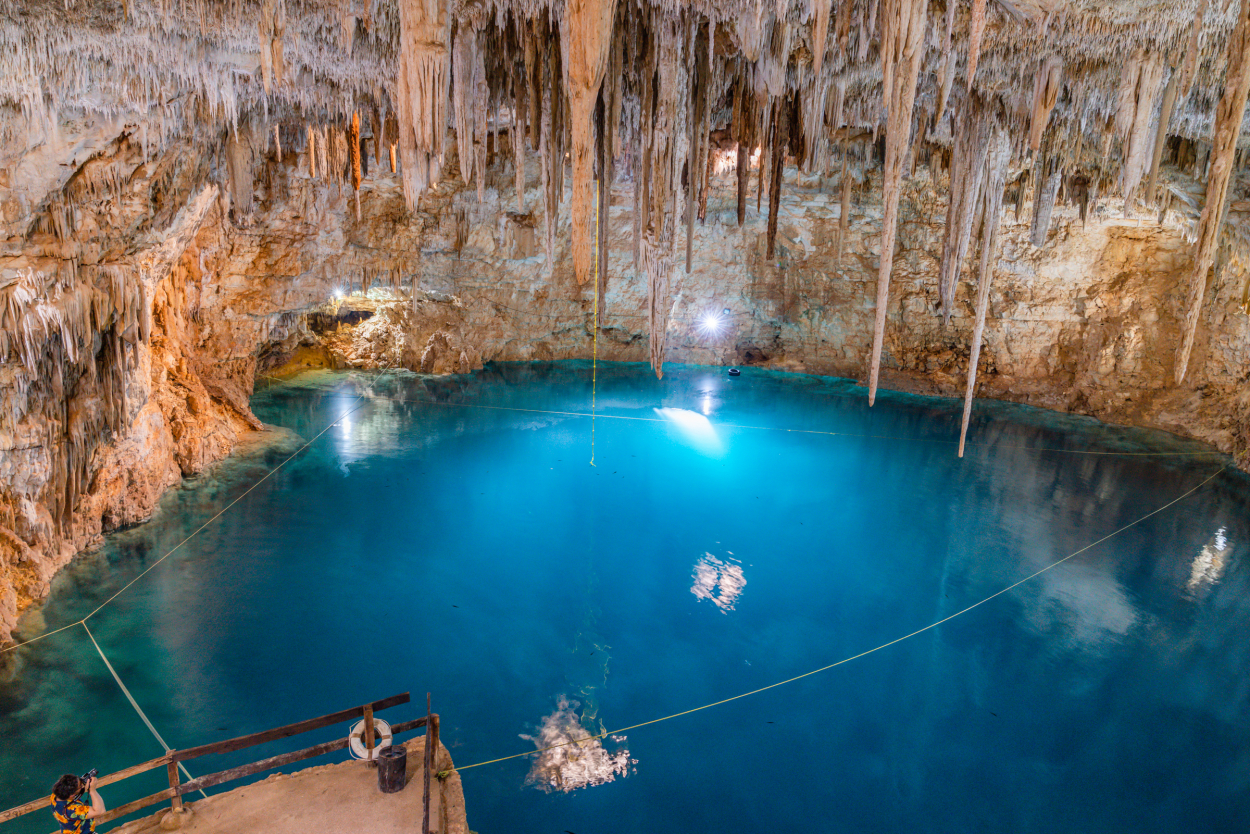Chichen Itza: How to Visit This Mayan Ruin
Now part of the New 7 Wonders of the World (UNESCO July 7th, 2007), Chichen Itza is one of the most visited archaeological sites in Mexico today. Every year many tourists flock to visit this famous Mayan ruin in Mexico.
Beyond the infamous Mayan calendar filled with predictions, the ancient civilization was also sophisticated in math and astronomy. The calendars assisted them in determining the best seasons for agriculture and religious ceremonies. With wars and deconstruction over time, it’s difficult to uncover all the hidden secrets, but archeologists have solved many mysteries through the Maya hieroglyphics.
Upon entering Chichen Itza, the first grand pyramid – El Castillo, also known as the Temple of Kukulcán, will catch your eye. Before 2006, visitors were allowed to climb up the stairs to reach the top (30 meters high) and enjoy the breathtaking views.
After you’ve taken in El Castillo, make your way to the Mayan Ball Ruin. Archeologists believe that at the beginning of the game, the ball was thrown into the court by hand and from then on, could only be touched with the hips and thighs. The number of players, the scoring system, and how the winner was decided are still unknown. The game is more of a ceremonial ritual than a sport.
Another interesting ruin is El Caracol (Observatory), which was used as an astronomical observation area through openings at the top of the tower. This building consists of three parts, most have now deteriorated.
If you don’t have much time, try to see The Sacred Cenote. It’s on the farther end of the site and can take quite a few minutes to walk over (especially in the humidity, make sure you have water and a good hat).
This fascinating cenote is naturally formed and was used for ceremonial offerings. In the beginning stages of practice, precious objects were offered to the water god, however, over time human sacrifices became the norm. Victims were warriors, children, and maidens thrown to the bottom of the cenote.
Where is Chichen Itza?
Located in the Yucatan Peninsula, just a few hours away from Cancun, many tourists flock to this location to learn about how the indigenous people of the ancient civilization once lived. The Maya translation of “Chichen Itza” is- “At the brim of the well where the Wise Men of the Water Live“.
The site is situated 125km west of Cancun on Mexico’s Yucatan Peninsula, in the state of Yucatan. The closest bigger city to Chichen Itza is Valladolid. The drive from Cancun to Chichen Itza is 2.5 hours.
How to Visit Chichen Itza Independently
First things first: can you visit Chichen Itza independently? You surely can and you can get to Chichen Itza before the tours which is a plus, but there are also other things to consider. I’ve done it myself a few times and it has pros and cons.
There are public buses (ADO) to Chichen Itza but there’s only one a day – leaving Cancun at 8:45 AM or Playa del Carmen (passing by Tulum) at 8:07 AM and coming back at 16:30 PM. The journey takes 3h so you’re on a tight schedule.
You won’t beat the crowds by using the public bus and won’t be able to see any cenotes nearby, so unless you’re on a very tight backpacker budget I don’t recommend this option.
Ultimately, to visit Chichen Itza independently you need to rent a car. While it’s not an issue to drive a rental car in Mexico, you need to be a confident driver because drivers tend to be aggressive.
The roads are good and it’s safe, but the journey time from Cancun, Tulum, or Merida is between two and three hours one-way. It’s a lot of driving in one day and why I can honestly say that if you want to relax you might as well take a tour.

Best Chichen Itza Tours from Cancun
Best Value: Chichen Itza with Valladolid, Cenote & Lunch Tour
This is one of the most popular and highly-rated tours from Cancun as it includes other activities nearby. Instead of heading to the most crowded cenote Ik Kil this tour heads to a different cenote and the colonial town of Valladolid so you can get a glimpse of the entire area.
Best Private Tour: Chichen Itza Early Access, unexplored Yaxunah, Cenote & Buffet Lunch
Skip the crowds by getting early access to Chichen Itza on this private tour. In addition to this, your private guide will take you to see untouched ruins at the archaeological site of Yaxunah. Most other tours don’t include these protected ruins hidden deep in the jungle. A delicious Mexican Buffet lunch, tequila tasting, and swimming in the refreshing waters of Cenote Samaal make it a magical day.
Best Budget: Chichén Itzá, Cenote, Valladolid & Meal
Easier on the pocket, this group tour starts with your guide filling you up on the history of Chichen Itza. After that, swimming in Cenote Samaal, a Mayan buffet lunch, and a quick stop at the charming town of Valladolid make this budget-friendly tour more than worth it.
Best Chichen Itza Tours from Tulum & Playa del Carmen
I grouped both Playa del Carmen and Tulum because to head from Playa del Carmen to Chichen Itza every bus must pass via Tulum, so unsurprisingly almost all tours allow pick-up in both towns.
Best Value: Chichén Itzá, Cenote Saamal, Kaua e Valladolid from Playa Del Carmen or Tulum
The best tour that gives you more to see and discover, you’ll learn the secrets of Oxidian processing at Kaua before heading to the impressive ruins of Chichen Itza. After that, descend the stone steps of Cenote Saamal for a swim and visit the colorful town of Valladolid.
Best Private Tour: Chichen Itza Private VIP Tour
Beat the crowds by reaching Chichen Itza early and having more time to explore these incredible ruins, on this private tour with an incredibly knowledgeable guide. Then jump into Cenote San Lorenzo Oxman for a revitalizing swim, before heading to Valladolid to taste authentic Mexican food before ambling around town.
Best for Cenotes: Chichen Itza, Cenote Ikkil and Hubiku plus Valladolid
Visiting one of the Seven Wonders of the World shouldn’t stop you from getting the chance to visit two cenotes in the same day. This deluxe tour of Chichen Itza also takes you to visit Cenote Ik Kil and Cenote Hubiku before visiting the Spanish churches in Valladolid.
Best Budget: Chichen Itza, Cenote and Valladolid Small Group Day Trip
A combo tour of Chichen Itzá and the colonial city of Valladolid, this tour gives you enough time to explore historic Chichen Itza and take in the colorful colonial architecture of Valladolid before heading to Cenote Xux Ha for a relaxing Mayan lunch and swim.
Best Chichen Itza Tours from Merida
Best for Pueblos Magicos: Tour to Chichen, cenote & magic towns from Merida
A designated Pueblos Magicos, the yellow town of Izamal is the first you’ll wander through. Then explore Chichen Itza on your own before going for a swim in Cenote Yokdzonot and shopping in Parque de Santa Lucia. Alternatively, pick a tour with visit a family cenote to save on admission fees.
Best Private Tour: Full Day Private Tour to Chichén Itzá, Cenote Ik Kil and Izamal
Experience Chichen Itza without being milled around like a tourist. This private tour with a bilingual guide immerses you in Mayan history at Chichen Itza. After this, you enjoy picture-perfect moments at Xcajum Cenote and Cenote Ik Kil before visiting the magical town of Izamal. Everything on your own time!
Best Budget: Chichen Itza Small Group, Buffet Lunch & Cenote from Merida
This budget-friendly tour takes you in a 16-seat van to Chichen Itza where you skip the lines via a private entrance. After exploring the pyramids and monuments, you can enjoy a swim at a cenote followed by a buffet lunch at the Mayaland resort. Easy on the pocket and covers the main attractions!
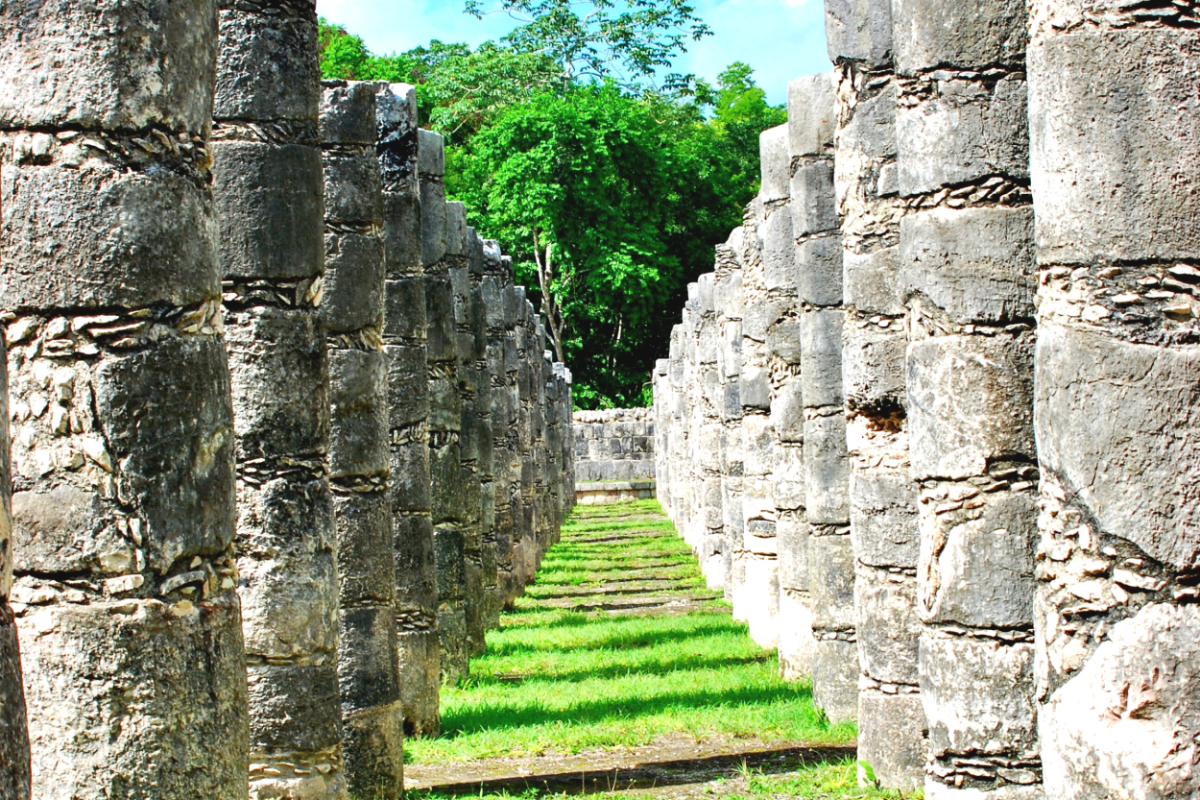
What to Know About Visiting Chichen Itza:
Can you climb to the top of the pyramid of Chichen Itza?
Climbing to the top of Chichen Itza is prohibited to protect the Mayan ruins from the huge number of visitors. The nearby Mayan ruins at Coba used to be popular for climbing, but since March 2020 climbing has been prohibited there as well (it might reopen for climbing soon though).
The nearest Mayan ruins that allow climbing as of this time are at Ek Balam, but the best site is actually Calakmul in the state of Campeche. If you want to feel like Indiana Jones or Tomb Rider with almost no tourists in sight Calakmul is what I recommend.
When is the best time to visit Chichen Itza?
While Cancun can be visited year-round, Chichen Itza is located inland which means that it can get hotter.
November through April offer the best weather to visit Chichen Itza. In the summer it can get hot and humid but is still worth visiting if you are in Yucatan especially considering that there will be fewer visitors.
Any more questions? Comment below!

